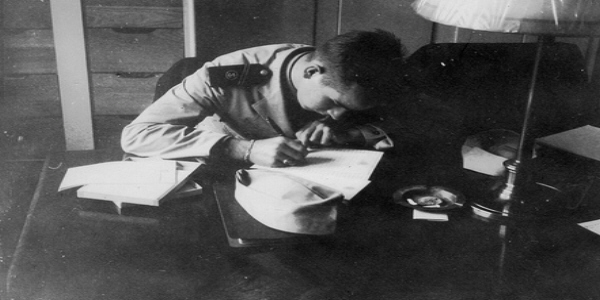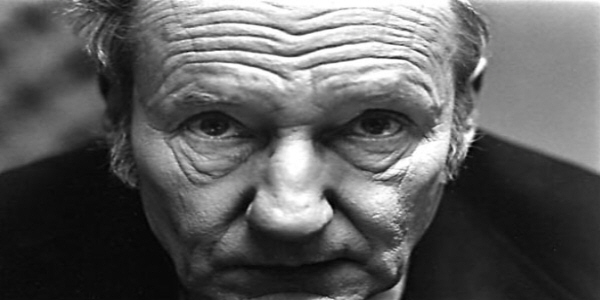
Back in the late fifties and early sixties, literature was supposed to be highbrow, intellectual, of the academy. Rock n roll’s triumph was to be the untutored scream from the street, the brazenly low-brow yelp that articulated a feeling wrenched up from the gut or groin. DH Lawrence never wrote a book called Tooty Frooty and Buddy Holly would never release a single called The Love Song of J Alfred Prufrock.
Rock and roll and literature first came together in the public consciousness with Jack Kerouac’s beat generation epic “On The Road”. Although the book had been first drafted in the early fifties and took as it’s narrative time frame the be-bop jazz of the immediate post war years of the late forties, it’s publication in 1957 perfectly coincided with the massive impact of Elvis Presley and the emerging teenage pop culture in Britain and the USA. As far as the mass public was concerned, “On The Road”, with its fast cars, wild music and tales of juvenile delinquency was the very first rock n roll novel. Kerouac’s love of jazz phrasing directly influenced his writing style, crafting epically long stream of consciousness sentences that meandered across the page like the joyful exhalations of a Charlie Parker saxophone solo. This method of writing to the rhythms of the current music of the times was echoed forty years later when Irvine Welsh laid down the brutal lines of Trainspotting to the hard repetitive beats of acid house.
The other writers that made up the loose collective of the Beat Generation – most notably William Burroughs and Alan Ginsberg – were to play a huge influence after the first primal beats of rock n roll had echoed from the swamp of a post Hiroshima America and evolved into the musical counter-culture that reverberated into the sixties, seventies and beyond. Ginsberg’s “Howl” was a massive influence on the young Bob Dylan, who soaked up and spat back out its angry political energy and vivid freewheeling verbosity on his own incendiary early releases. His self penned album sleeves were writ heavy with the hand of the Beats, all anarchic imagery and amphetamine-fuelled synapse. By 1972 Dylan had took the next logical step and published his own Beat Novel, the largely incomprehensible “Tarantula”. Unfortunately hardly anyone read it, and of those who did only the most determinedly devoted Dylan follower pretended to know what it was about. Thankfully Bob abandoned his literary career and kept his lyrical energy cooped up where it worked best, in three or four minute bursts of melodic bile.
Over in New York City, Lou Reed and The Velvet Underground didn’t so much as wear their literary influences on their sleeve as drag them around on a dog collar and lead. They were named after an S&M themed pulp fiction novel and sang songs inspired by the Marquis De Sade and the poet Delmore Schwartz. During his later solo career, Lou Reed made explicit his debt to hard boiled realist writers such as Hubert Selby Jnr and Raymond Chandler in his tough bitten tales of New York street life.
Later on, Burroughs perfected the “cut-up” – a method of writing that involved slashing an established page of text to pieces and re-assembling it at random in the name of spontaneous juxtaposition. By using the cut-up, the artist absolves himself of any authorial responsibility and restrains his own ego from directing the narrative flow.

This was an approach that hugely appealed to David Bowie who at the time was pretending to be a cold-blooded alien from outer space. The idea of formulating song lyrics from such a coldly dispassionate process fitted right in with his then remote outsider stance. When applied to the actual sonic fabric of music itself, the cut-up theory later found it’s natural correlation in the art of sampling. Much of the early hip-hop and electro music that came out of New York in the late seventies and early eighties was the musical equivalent of a Burroughs collage, plundering bass lines and beats from such disparate sources as ancient soul records, UK bubble gum pop and early seventies Krautrock.
After punk exploded, literature and rock music were locked in a loving embrace, never to be disentangled. Perhaps not surprisingly Irish and Anglo-Irish musicians have always dipped their pens in the deep inky tradition of their country’s lettermen and women, from The Pogues early Brendan Behan inspired suits, The Waterboys adaptation of WB Yeats poetry and Morrissey’s early insistence of being photographed with an Oscar Wilde Collection to hand. Other musicians noted for their lyrical prowess such as Nick Cave and Billy Bragg have took the next logical step and become credible published authors in their own right. The very best rock music and literature share much common ground – particularly the power to transport the human soul above the mundane. It’s a rich and fertile country. Someone should write a book about it.
“I can make it longer if you like the style
I can change it round and I wanna be a paperback writer”
© Words – Russ Litten/ ZANI





